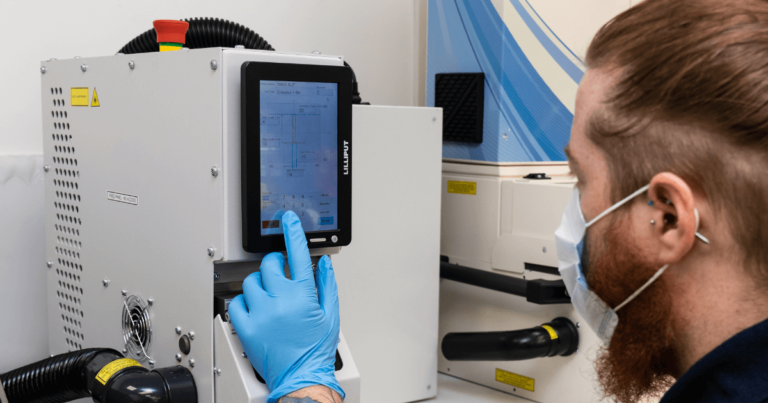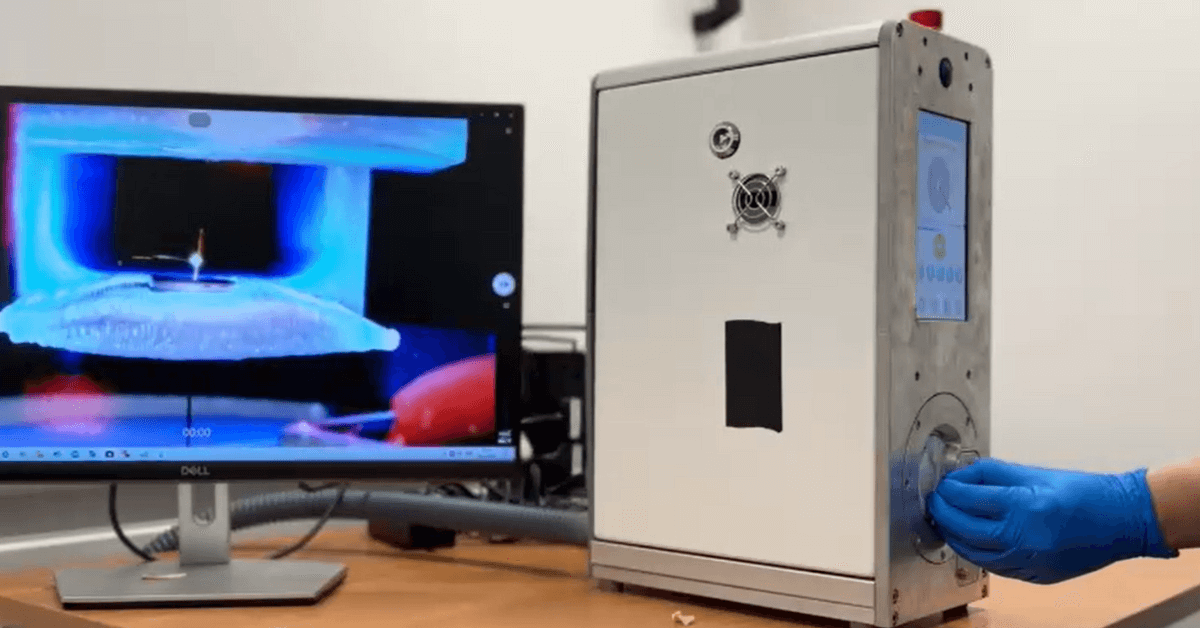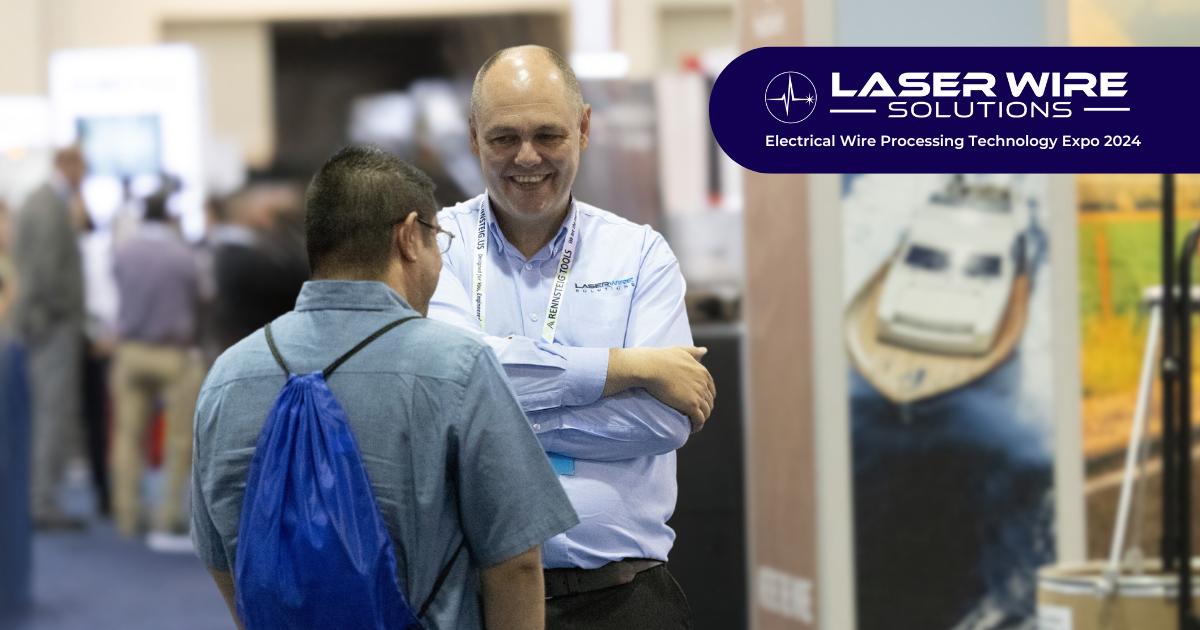Laser wire stripping is a process that is used to remove the protective insulation from the end of wires to allow the wire conductor to be electrically connected. A familiar example is wire stripping to connect the wires inside an electrical plug for a TV or lamp. Laser wire stripping uses a laser to cut the insulation instead of a knife. The laser is capable of extreme precision which is vital when the wire to be stripped is very delicate, mission critical or both. Laser wire stripping is the go-to solution for critical applications and reduces scrap, removes the dependence on highly skilled technicians and in many cases allows novel product designs that can only be manufactured by the use of lasers.
Laser wire stripping machines are specifically designed for the task in hand to ensure they are easy to use and effective. A number of key elements are integrated inside a laser wire stripper: a source of the laser light; mirrors and lenses to deliver the light to the wire from all sides to create a 360 degree strip; a way of holding or mounting the wire in the correct way; a laser safe enclosure to allow the machine to be used in a standard operating environment; a simple touch screen to allow the Operator to quickly program the unit and optionally inspection cameras or barcode data entry units.
Whether you’re investigating new processes or looking to upgrade your current system, it’s important to know everything there is to know about laser wire stripping. Read on for five helpful insights that will help you understand laser wire stripping process before moving forward with implementation.
Laser Wire Stripping is Revolutionizing Cable Manufacture
Laser technology is being used more and more to prepare wire and cable before connection in multiple industries. The technique creates a nick-free strip – no matter how delicate or critical the application. It is frequently used in medical device manufacture where key-hole surgery catheters contain wires that are thinner than a human hair, or in other safety-critical industries such as aerospace or safety sensors in cars.
The non-contact nature of the process means that you get the same high-quality result every time with no degradation due to wearing blades. This is why laser wire stripping is being adopted in automated cable harness manufacture where downtime or yield reduction due to blade wear is a significant cost and headache.
New laser types and processes are opening up new applications by being able to solve long-standing manufacturing issues such as connecting large numbers of microscopic coaxial cables used in sensors and medical imaging.
Laser Wire Stripping Creates a Nick Free Removal of Insulation
Laser light is used for vaporizing cable and wire insulation to allow it to be connectorized using crimping, soldering, or welding. The laser type is carefully selected so that the light is strongly absorbed by the material you need to remove, yet harmlessly reflects off the material you want to leave undamaged. In this way, the process is self-limiting as the light cannot damage the underlying layer – giving a perfect result every time with a large process window.
Lasers emitting light of a deep-infrared color are perfect for stripping polymer insulations from metallic shields or conductors. The light is absorbed by all polymer materials no matter the color, and the light is reflected from the metallic shield / conductor no matter the diameter or metal selected.
Conversely, near-infrared or ultra-violet lasers can be strongly absorbed by thin metallic foil or braid shields and yet reflect from the underlying plastic insulation. These techniques allow high-quality stripping of the toughest or most delicate cable constructions with perfect results every time.
Lasers are Safe to Use in a Standard Factory
The lasers used in laser wire stripping are powerful devices capable of vaporizing plastic or in some cases cutting metal. The light is very hazardous to humans as it can burn skin or even blind a person.
However, the machines supplied by Laser Wire Solutions are completely safe to be used in a standard factory environment as the machines are built with safety in mind with a fully enclosed metallic safety enclosure.
The enclosures are designed to the most stringent international safety standards which ensure that operators and maintenance personnel can never be exposed to laser light. The resulting “Class 1” laser classification is the same as your DVD player at home which also contains a dangerous laser source.
The other potential hazard from laser wire stripping is the emission of poisonous gases or particles as a result of the stripping process. All Laser Wire Solutions systems are supplied with specialized fume extraction units that are self-contained and conveniently sit under the workbench. The extractors are very similar to soldering fume extractors and contain chemical and fine particle filters to ensure the extracted air is good to return to the factory – even when working in a clean room.
The Most Popular Uses of Laser Wire Stripping
Laser wire stripping is used in almost all industries for critical applications for manufacturing using high-value cable and wire connections. It is primarily used where the historical solutions created yield, ergonomic, or quality problems.
Some very popular applications are the stripping of the ultra-thin wires used inside medical devices, stripping insulation from tough insulations such as fiberglass, and stripping multiple cables at once without the need for a special die blade, or stripping cables that are not round – such as shielded twisted cables.
Key Takeaways
Laser wire stripping offers peace of mind in terms of a perfect strip result every time. In some cases, this is an enabling technology allowing new cable constructions or device designs to be used. In others, it significantly increases yield, connection strength, or simply the need to regularly inspect the result.
Laser stripping is not suited to every application – but where you have a device that is high value and the wire connections are very small or critical – there is no better way to make your connection.







